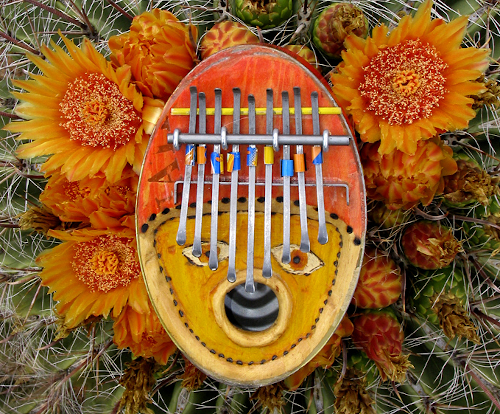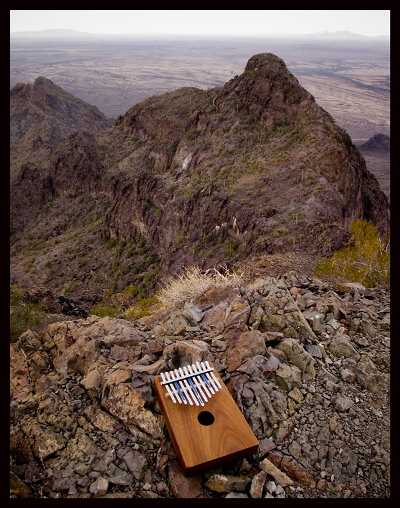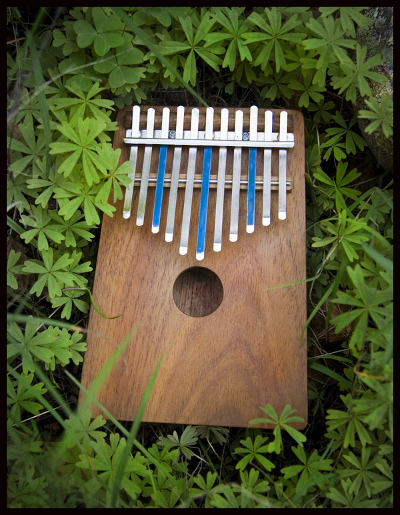Home > Info > How To Play > The Intuitive Approach

The kalimba is one of those rare instruments that you can play without really knowing anything about music or anything about the instrument. There are certain “rules of thumb” you can learn, and you can sound really good armed with those and a bit of confidence.

Consider Kalimba as a spiritual practice. Consider it as a path of improvement and deepening, but that any improvements in your kalimba playing can be mirrored by improvements in your person. Insight into kalimba can be reflected by insight into self. Relaxing in your playing can result in relaxing in your self. Letting go of all obstacles, fears, old or irrelevant ideas in our kalimba playing to reach a more fulfilling level can be a model for how we can overcome our fears and obstacles in your daily life.
I am letting go of a huge burden. I had a series of “Tips of the Day” and old newsletter blog posts dating between 2005-2015. I love to write and to create about the kalimba, and these posts were my main outlet.
My work has shifted, and now my main creative outlet is to create books and ebooks – each ranging between 24 and 100 pages of kalimba wisdom, music theory, tablature, and songs. Information that will be helpful to some people on their kalimba journeys.
With the advent of this new (December 2020) Kalimba Magic web site, I am letting go of that old, old material, and embracing the new. The books and ebooks speak for themselves.
Just as I have moved on to the next level in my kalimba career, I ask you to step up too. Rather than to lose the benefit of all those old tips and links I used to have in this page, I am asking YOU to step up and become the Kalimba Master. Instead of me giving my point of view on these matters, I ask that you turn your consideration inward. Pay attention, not only to your kalimba playing, but also to your mind and to your heart as you play. I ask you to ponder each of these below topics as a koan. Write your own articles in your mind, starting with the below titles, which were once my own posts. If you are working on one over time, write it on a sticky note to yourself:
Let the kalimba play you
Short-cutting intuition – can you discern an “rules of thumb” that tend to work?
People have been playing kalimba for well over a thousand years in Africa – how does playing kalimba now connect us with the Ancestors who brought kalimba wisdom to us?
Do you thirst for the kalimba’s music?
Healing rays of light and lovet
Understanding the logic
Knowing the note or taking the ride? When I play, I almost never think about what exact note I am playing – I just run and jump and fly.
Listening: Most of the time, it is more important to hear than to speak. When playing with other musicians, seek more to understand what they are doing, think less about projecting your own understanding.
Wrong notes? What wrong notes? You can often make an unexpected-sounding note better by what you do after it. if that doesn’t work, just remember which note you didn’t like, and avoid that note, at least for the current song.
Simplicity of notes. Yes, you can play very fast on the kalimba… but instead of running as fast as you can, just try to sink into the simple wisdom of the notes the kalimba has. There is wisdom in the tuning.
Play with effortless grace. If you have something complicated you are trying to play, the stress and strain will often come through the music. Kalimba music naturally expresses grace and beauty. Can you get to that place in your playing that reflects this naturally?
Being present – pay attention. Always. “Don’t you miss it. Don’t you miss it. Some of you people just about missed it.” Yes, it took me 30 years to understand that line in the Talking Heads song. It took me 30 years to be present to that one thing. How many other things are we not present to?
Speaking the kalimba’s language. Each kalimba has a different native tongue. When you pick up a new kalimba in a new tuning, your job is to listen and understand it’s language. And then, it is your job to learn to speak that language.
New Age Sounds – There are dozens of little new age tricks you can do on your kalimba. The glissando. The wah-wah. Some of the best tricks I have seen were discovered by novice players who didn’t know what to do, and they just did something… something that I had actually never thought of. Do not be constrained by your presuppositions, but let go and let the kalimba lead you to a new place with its sounds.
The wah-wah effect: It seems that the kalimba should be uniquely unexpressive and dull. You let the sound go by plucking a tine, and then that is it, it just decays with no expression or modulation from the player, right? Not quite! Kalimbas with sound holes or resonant chambers can have their sound modulated by the “wah wah effect”. Learn to use it boldly, subtly, naturally without thinking. Learn to use the wah to pulse life in vibrato into the kalimba notes. Learn which tines have a stronger wah effect and which have a smaller effect. But do become friends with the wah wah.

Playing with nothing but intuition is not very reliable.
But if you tap your intellect, broadly speaking (versus at a detailed level where you are
concerned with each exact note), your intuitive learning can be enhanced.
Again, on your path toward mastery, I ask you, dear student, to ponder these as koans. You are on the honor system – honor yourself and honor your responses. Take as much time with each as you need. Return here and ponder ever more deeply as required:
Mark’s “Rule of Thumb” – really, its a thing.
How the Hugh Tracey got its stripes – yes, it reflects many African musical principles, but it is a firmly western instrument
A steady foundation – With one thumb, make a simple (2, 3, or 4 notes) pattern that repeats. While that half of your brain is on automatic pilot, put your higher attention to the other hand and see if you can fly together with the repeating thumb.
Symmetrize – if you do a pattern that uses left thumb one way and right thumb the other way, SWITCH ROLES. That is, whatever the left thumb was doing, teach the right thumb to do essentially the same thing, but on the right side. And similarly right to left. This is harder than it sounds, and it is worth spending hundreds of hours on this sort of practice.
Symmetry. There are many sorts of symmetry you can explore on the kalimba. Spend five minutes finding a short, 3 to 6 note pattern. Really, this works best with short patterns. Then, think: what would Bach have done with this pattern? What symmetry operations can you apply to that simple seed of music? You can shift it further left, or further right, higher or lower, without changing the basic thumb motions. Or you could reverse the pattern. Or flip the pattern to the opposite thumbs. Really, there is so much to think about left brain and right brain.
Changing octaves on the Pentatonic & Diatonic kalimbas. Do you know what octaves sound like? On kalimbas with these tunings, start on a low left side note… and find the same note an octave up, higher, on a shorter tine on the opposite side of the kalimba.
Let one thumb slack while the other works. There are many flavors of this. One of my favorites is to establish a flow with a regular left-right alternating pattern, and then left one thumb dominate while the other thumb gets softer, less interesting, or even leaves holes. Put your mind into the strong thumb. Be sure to symmetrize and exercise both thumbs equally. Can you see how this sort of practice can change your brain?
Design your own practice. Use the kalimba to guide you in your explorations of your own self. Let your kalimba practice evolve and blossom, even as your own person blossoms in this new sonic illumination you are applying.
I wish the very best to you on your kalimba journey. I myself think that everyone should do this sort of personal kalimba exploration. It will help you understand the kalimba (and yourself) better. You will know the kalimba, and be comfortable when playing the kalimba. It could be the entirety of your kalimba path. Or, it could be the foundation of more precise, more advanced kalimba learning.


Sign up for our newsletter and free resources with your email address:
We pinky promise not to spam you and to only send good stuff.
 Christmas in July 2025
Christmas in July 2025 Patriotic and American Music for Kalimba
Patriotic and American Music for Kalimba